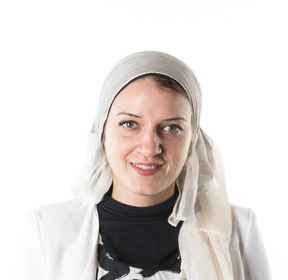
Shereen Nader Elsayed Hussain
The British University in Egypt EgyptTitle: The effect of the PRF and Simvastatin on bone formation and post-surgical inflammation after induction of critical size bone defects in rats tibiae
Abstract:
Aim: This study compares the bone regenerative power of SIM and PRF and the combination added locally on induced bone defect and their effect on inflammatory markers.
Materials and methods: Critical size bone defects was induced in 48 male albino rats of average weight 150–200 g and were divided into 4 groups according to the filling material. Control, PRF, SIM and SIM/PRF group. Each group was subdivided according to the sacrificing period into two subgroups (one and two-months postoperatively). Tibial specimens were evaluated histologically using Hematoxylin and eosin (H&E) stain, serum inflammatory markers (IL-1β, IL-6, IL-10 and TNF-α) 6 days post-surgery using ELISA technique.
Results: Bone specimens of the SIM group and the combination showed well observed darkly stained areas of matured bone compared to the other groups especially two-month postoperatively, the SIM/PRF group showed matured bone trabeculae surrounding bone marrow spaces which appeared densely stained with normal osteocytes lacunae. Resting and reversal lines were obviously detected in the combination group only, denoting high bone remodeling activity in this group. PRF and SIM decreased significantly the pro-inflammatory IL-1β serum levels compared to the control group, SIM loaded on PRF showed the highest statistical significant decrease in IL-1β serum concentration (P<0.001). IL-6 and TNF-α serum levels didn’t differ significantly between the control and PRF group, but showed statistical significant decrease in the SIM and SIM//PRF groups. In contrast PRF, SIM and SIM/PRF significantly increased IL-10 serum levels compared to the control group with the highest significant increase in the SIM/PRF group (P<0.001).
Conclusion: Comparing SIM with PRF each as a sole filling material in the bone defect, SIM showed more enhanced bone regeneration and more powerful anti-inflammatory effect, while the combination has proven to cause the most significant bone formation but without significant effect on inflammation.
Biography:
Shereen Nader Raafat currently working in the department of pharmacology and toxicology (Pharmaceutical Sciences), Faculty of Dentistry, The British University in Egypt (BUE). She has done her graduation from the Faculty of Pharmacy, Ain Shams University. First she had Masters Degree in Clinical Pharmacy from Ain Shams University with the opportunity to implement clinical pharmacy practice where she first worked in The National Institute of Urology and Nephrology, where she aimed to improve general patient’s health and pharmacy practice. Since joining academia, she has researched extensively problems related to the orthopedic field. She has attended various national and international conferences and workshops on experimental animals and tissue culture. Recently she had her PhD Degree in the Pharmacology Department, Cairo University. Recent research has been published in The Journal of Bone which had a powerful impact not only on the field of orthopaedics but also the field of dentistry.

